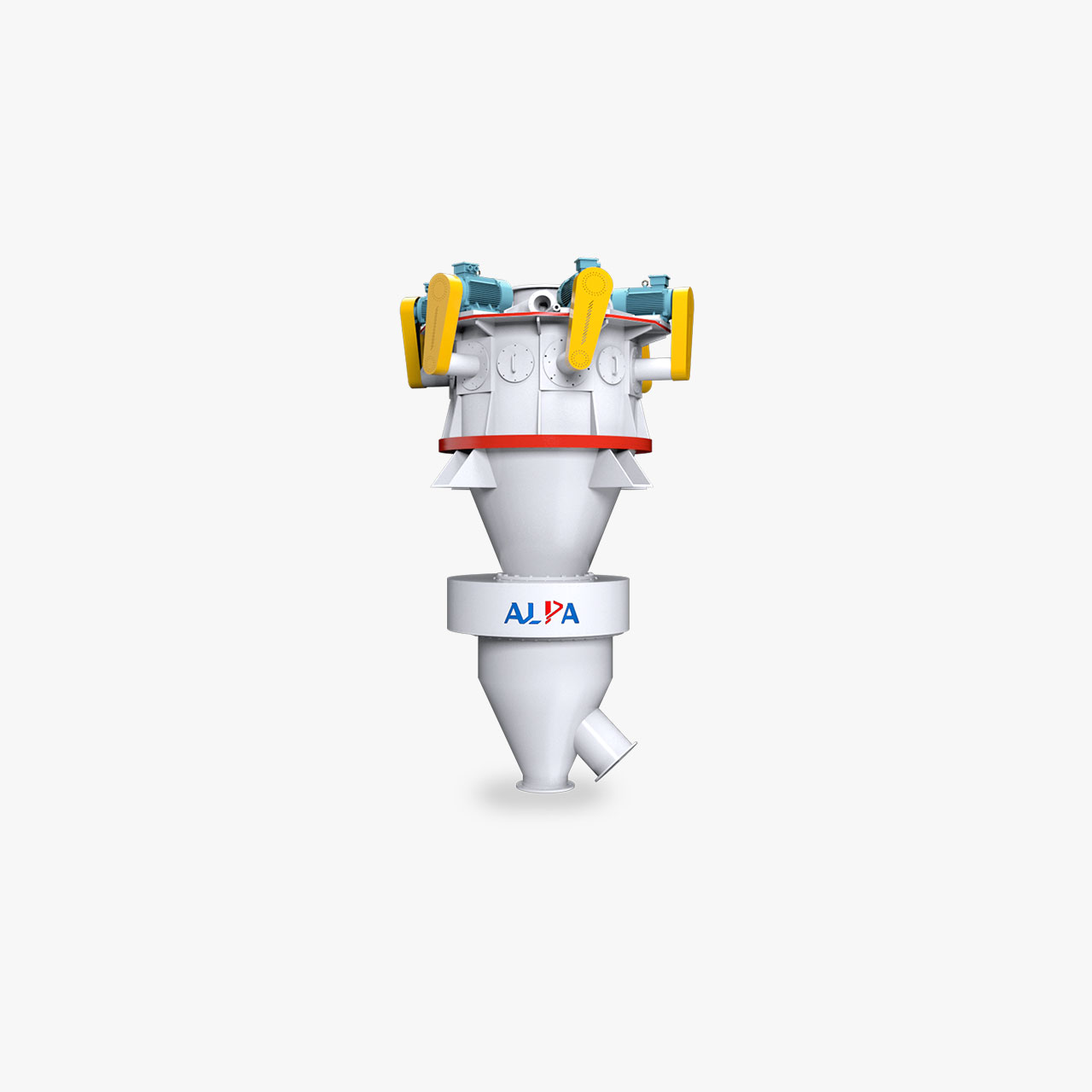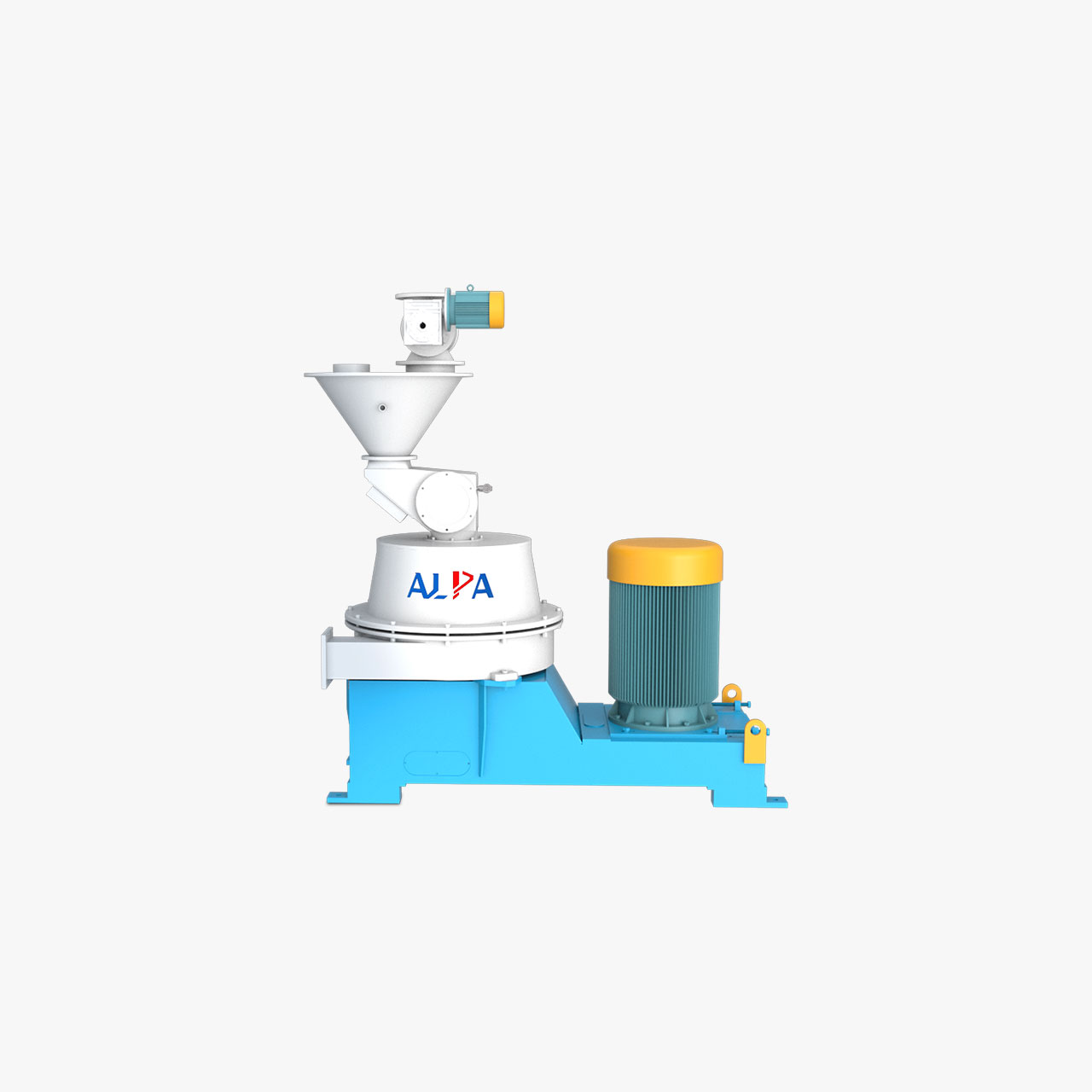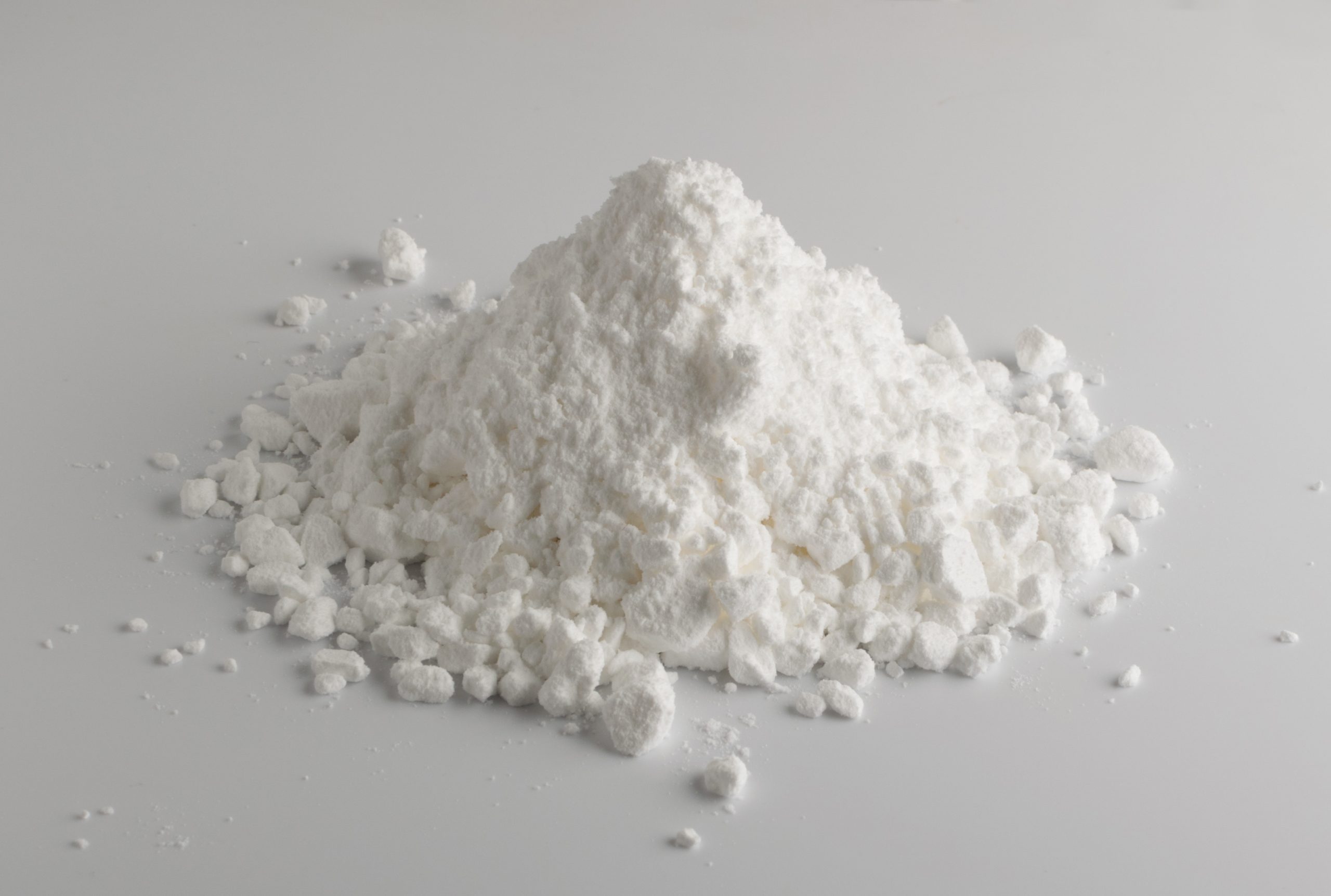Application of talcum powder in engineering plastics
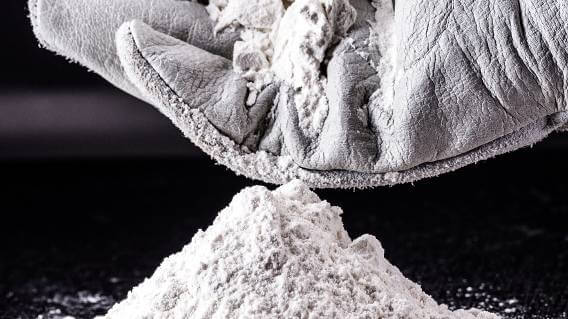
Talc powder is a white, flaky, high aspect ratio, inorganic and inert natural mineral. It is widely used in PP, PA, PC/ABS alloy, PBT, LCP and other engineering plastics. It has similar calcium carbonate filling cost reduction And near glass fiber reinforced dual function. Talc powder has the ability to increase the HDT temperature of products, the flexural modulus of thin-walled products, and reduce the coefficient of linear expansion CLTE, etc. It is widely used in industries such as automobiles, home appliances, and food containers.
The crystalline structure of talc is layered, which tends to be easily split into scales, and has special properties such as lubricity, anti-sticking, flow aid, non-absorbent, and chemical inertness. Ultra-fine talc powder is processed from natural minerals through multiple processes such as mining, rough selection, fine selection, crushing, coarse grinding, airflow grinding, etc. The key factor for high-quality talc powder products is to retain the flaky structure of talc powder to the highest degree .
1) Ultrafine talc powder filled products have high flexural modulus and are suitable for high rigid parts.
2) Filling modification has better dimensional stability, better aspect ratio control ability, and anti-warping performance is obviously better than glass fiber.
3) Talc micropowder can be used as an inorganic nucleating agent, assisting with an organic nucleating agent to achieve a nucleating effect and increase the HDT temperature.
4) Comply with the requirements of FDA, ROHS and other regulations, and meet the limit that talcum powder does not contain asbestos (the International Cancer Research Center IARC lists "asbestos-containing talc" as a carcinogen)
Application of talcum powder in TPO
Under the same experimental conditions, change the type of EPDM/POE, the content of the toughening agent, and select talc powder products of different thicknesses to evaluate the complete strength of the modified TPO, the notched impact strength at room temperature and low temperature, and HDT temperature and The performance of the linear shrinkage of the material. The following is the particle size index of Yimifabi talcum powder products that are routinely used in the market.
Ultra-fine talc powder has more flaky structure, which can better strengthen TPO plastics, endow TPO products with low shrinkage rate, improve the dimensional stability of products, and be used to produce "thin-walled" products, so that products can be designed Thinner and more precise dimensions.
Effect of Powder on Thermal Conductivity of Alumina Ceramics
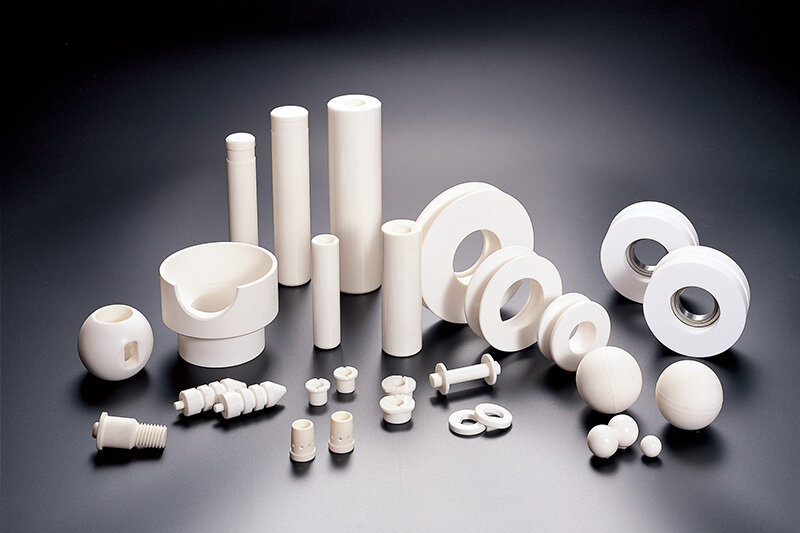
In the preparation process of ceramic materials, the preparation of powder is a very important link, and the performance of the powder directly determines the performance of the finished ceramic product. The performance of the powder mainly depends on the particle size distribution and microscopic morphology of the powder.
The particle size distribution of powder mainly affects the grain size and sintering performance of ceramic materials. The researchers studied the effect of the particle size distribution of the powder on the density of the alumina ceramic material, and the results showed that the alumina ceramic with a density of nearly 99% can be prepared regardless of the use of a wide or narrow particle size distribution powder, and its grain size can be maintained. At about 1 μm, however, a wider particle size distribution can increase the density of the powder compacted green body, enabling the material to undergo a densification process with a smaller shrinkage rate. The main reason is that the large particles in the powder with a wide particle size distribution will More voids are formed, which are filled with fine particles during the molding process.
The researchers conducted a more in-depth study on this. They divided the sintering into three stages: initial, middle, and late stages. The powder with a wider particle size distribution increases the density of the green body and accelerates the densification rate of the ceramic in the early stage of sintering. In addition, in the middle stage of sintering, the powder with wide particle size distribution increases the rate of grain growth, and the closed isolation pores in the material are embedded in the larger granular matrix, so it has better sinterability and helps To maintain a high sintering speed in the later stage of sintering. However, a wider particle size distribution will lead to a difference in densification due to the accumulation of local particles of the material. Even when the particle size distribution exceeds a certain size, the grain size of the sintered body will be too large and the pore structure will become coarser. In order to obtain highly densified alumina ceramics, the selection of molding and sintering methods plays a key role in the selection of powder particle size distribution. Therefore, the particle size distribution of the powder has a great influence on the density of the ceramic material, which in turn determines the thermal conductivity of the ceramic.
The alumina powder with regular shape will have a great impact on the performance of ceramic materials during the sintering process. The researchers believe that the powder with reasonable particle size and particle gradation can be granulated by adding a binder to the powder. Making it more fluid will have a positive impact on subsequent molding and sintering. Among them, the granulation process is to make the powder form a spherical shape under the action of the binder, which also indirectly shows that spherical alumina plays a positive role in improving the density of ceramics during the molding and sintering process.
Therefore, it can be found that the performance (morphology and particle size) of the powder affects the performance of ceramic sintering, which also means that the thermal conductivity of ceramics is inseparable from it. After molding and sintering, the flake powder has a lower density and a higher porosity. , the researchers preliminarily speculated that its thermal conductivity is not high; and spherical alumina powder can produce high-density transparent ceramics, so it can be judged that using spherical powder to prepare thermally conductive ceramics is a suitable choice.
Superfine Powder Classification Process
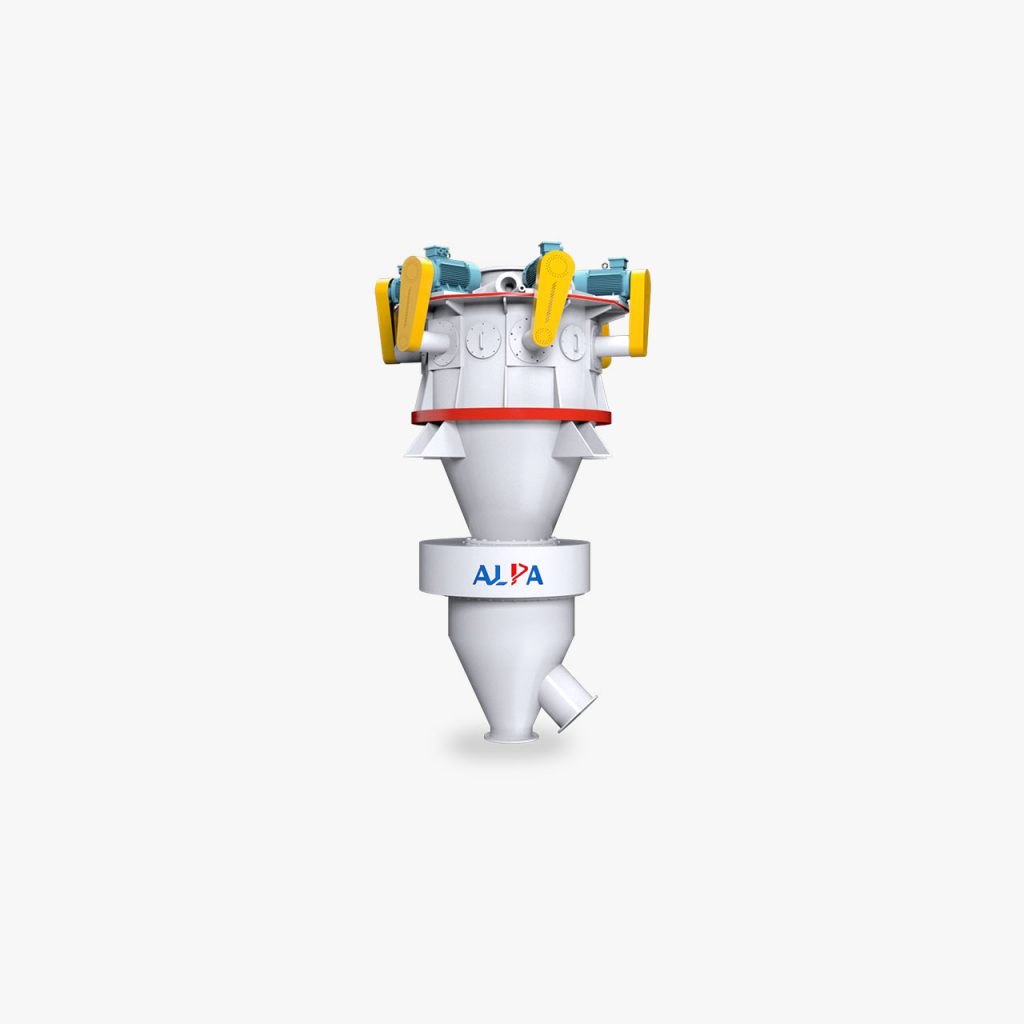
Ultrafine powder raw materials are not only the basis for preparing structural materials, With the application of ultra-fine powder in modern industry more and more widely, the position of ultra-fine powder classification technology in powder processing becomes more and more important.
At present, it is difficult for the ultrafine powder produced by mechanical methods to achieve the required particle size through mechanical crushing at one time, and the product is often in a large particle size distribution range. In the use of various modern industrial fields, it is often required that ultrafine powder products be in a certain particle size distribution range.
At present, the more common grading method is based on the gravitational field and the centrifugal force field.
Gravity field grading principle is the oldest, most classic and relatively perfect theory, and its theoretical basis is based on Stokes' law in laminar flow state. In the classification process, it is assumed that the flow field is carried out in a laminar flow state, and the ultrafine solid particles are assumed to be spherical and free to settle in the medium. These are quite different from the actual situation. In the centrifugal force field, the particles can obtain much greater centrifugal acceleration than the gravity acceleration, so the sedimentation velocity of the same particle in the centrifugal field is much higher than that in the gravity field, in other words, even smaller particles can obtain a larger sedimentation velocity .
In addition, ultrafine powder classification can be divided into dry classification and wet classification according to the medium used. The characteristic of dry classification is that air is used as fluid, which is cheap and convenient, but it has two disadvantages. One is that it is easy to cause air pollution, and the other is that the classification accuracy is not high. Wet classification uses liquid as the classification medium, and there are many post-processing problems, that is, the classified powder needs to be dehydrated, dried, and dispersed for wastewater treatment, etc., but it has the characteristics of high classification accuracy and no explosive dust.
According to different fluid media, it can be divided into dry classification and wet classification. In dry classification, it can be divided into gravity type, centrifugal type and inertial type according to different classification principles.
1. Gravity super fine classifier
Gravity ultra-fine classifier is used to classify particles with different particle sizes in the gravitational field at different sedimentation velocities. There are two types of gravity classifiers: horizontal flow type and vertical flow type.
2. Inertia classifier
Particles have a certain amount of kinetic energy when moving, and when the moving speed is the same, the larger the mass, the larger the kinetic energy, that is, the larger the inertia of motion. When they are subjected to the action of changing their motion direction, different motion trajectories will be formed due to the difference in inertia, so as to realize the classification of large and small particles. At present, the classification particle size of this classifier can reach 1 μm. If the particle agglomeration and the existence of eddy current in the classification chamber can be effectively avoided, the classification particle size is expected to reach submicron level, and the classification accuracy and classification efficiency will be significantly improved.
3. Centrifugal classifier
Centrifugal classifiers are a type of ultra-fine classifiers that have been developed so far because they are easy to generate a centrifugal force field that is much stronger than the gravitational field. According to the different flow patterns in the centrifugal force field, it can be divided into two types: free vortex type and forced vortex type.
4. Jet classifier
Compared with other classifiers, the jet classifier has the following characteristics:
(1) There are no moving parts in the grading part, the maintenance workload is small, and the work is reliable.
(2) Jet jet can make the powder get good pre-dispersion.
(3) Once the particles are dispersed, they immediately enter the classifier for rapid classification, avoiding the secondary agglomeration of the particles to the greatest extent.
(4) Multi-level products can be obtained, and the particle size of each level can be flexibly adjusted through the angle of the grading blade and the outlet pressure.
(5) High classification efficiency and classification granularity.
Preparation of Ultrafine Rare Earth Oxide
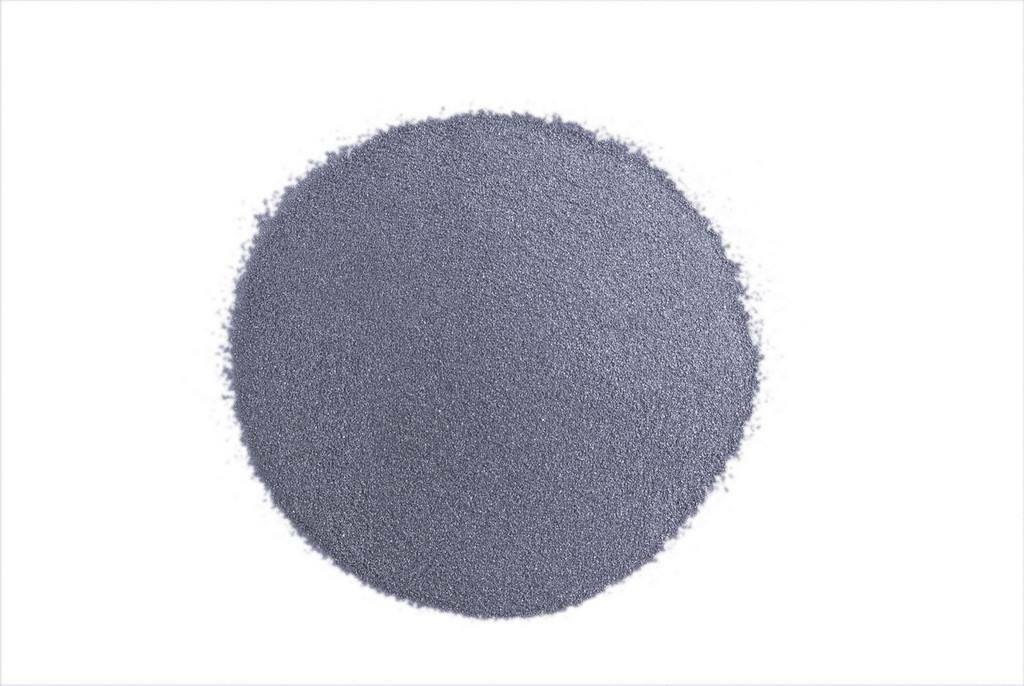
Ultrafine rare earth compounds have a wider range of uses. For example, superconducting materials, functional ceramic materials, catalysts, sensing materials, polishing materials, luminescent materials, precision electroplating, and high-melting-point high-strength alloys all require rare earth ultrafine powders. The preparation of rare earth ultrafine compounds has become a research hotspot in recent years.
The preparation method of rare earth ultrafine powder is divided into solid phase method, liquid phase method and gas phase method according to the aggregation state of the substance.
Among the precipitation methods, the ammonium bicarbonate precipitation method and the oxalate precipitation method are the classic methods for producing ordinary rare earth oxides. As long as the appropriate conditions are controlled or changed, ultrafine rare earth compound powders can be prepared, so they are the most suitable for industrial The method of production is also a method that has been studied more. Ammonium bicarbonate is a cheap and easy-to-obtain industrial raw material. The ammonium bicarbonate precipitation method is a method developed in recent years to prepare ultrafine powders of rare earth oxides. It has the characteristics of simple operation, low cost and suitable for industrial production.
In the research, it was found that the concentration of rare earth is the key to the formation of uniformly dispersed ultrafine powder. In the experiment of precipitating Ce3+, when the concentration is appropriate, it is generally 0.2~0.5mol/L. Calcined cerium oxide superfine powder, its particle size is small, uniform, and good dispersion; when the concentration is too high, the grain formation speed is fast, and the grains formed are many and small, and agglomeration occurs when the precipitation begins, and the carbonate is serious. Agglomerated and strip-shaped, the finally obtained cerium oxide is still severely agglomerated and has a large particle size; when the concentration is too low, the grain formation rate is slow, but the grains are easy to grow, and ultra-fine cerium oxide cannot be obtained.
The concentration of ammonium bicarbonate also affects the particle size of cerium oxide. When the concentration of ammonium bicarbonate is less than 1mol/L, the particle size of cerium oxide obtained is small and uniform; when the concentration of ammonium bicarbonate is greater than 1mol/L, partial precipitation will occur, resulting in Agglomeration, the obtained cerium oxide particle size is relatively large, and the agglomeration is serious.
The oxalate precipitation method is simple, practical, economical, and industrializable. It is a traditional method for preparing rare earth oxide powder, but the particle size of the prepared rare earth oxide is generally 3-10 μm.
Ultrafine Talcum Powder Production Process
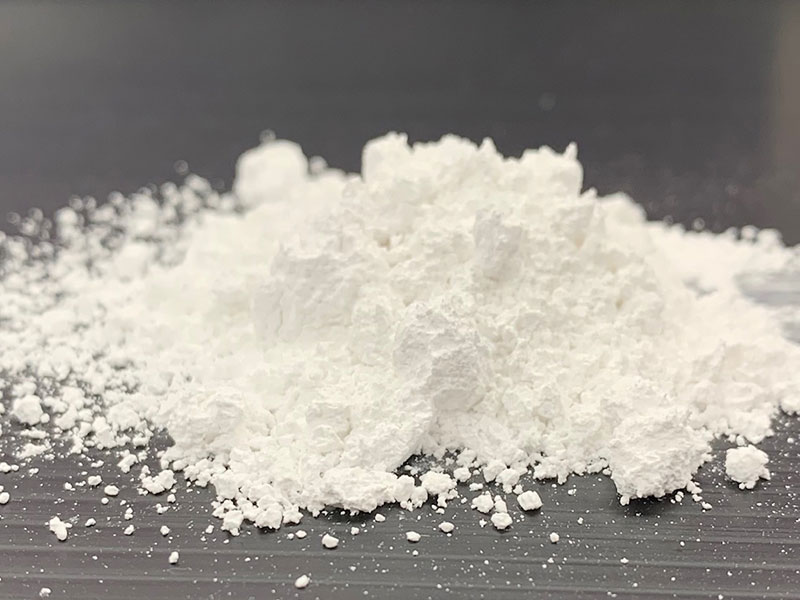
Ultra-fine talc powder is an ultra-fine natural talc powder processed from high-purity talc ore. It is widely used in plastics, rubber, coatings and other industries. Ultrafine talc powder is mainly used in PU transparent primer and PU solid color topcoat in solvent-based wood coatings. It is widely used in industrial coatings, mainly to reduce costs and improve the filling performance of primers. In water-based latex paint, it can endow the paint with good brushability, leveling, gloss retention and flexibility, and at the same time effectively improve the corrosion resistance and dryness of the coating.
Talc beneficiation can be divided into flotation, hand separation, magnetic separation, photoelectric separation. At present, there are still some defects in flotation technology, so the whole industry basically does not use flotation beneficiation; manual selection is based on the difference in smoothness of talc and gangue minerals, as well as the experience accumulated by workers in selection, which is currently more commonly used. method. The method of sorting by using the different optical properties of talc and impurity mineral surfaces is called photoelectric separation, and this method is now more and more valued and used by enterprises.
After the ore is sorted and stored in the warehouse, it enters the workshop in batches for crushing and coarse powder grinding before ultra-fine grinding: first, hammer crushing, then vertical mill grinding, iron removal treatment, and bagging.
With the advancement of science and technology and the continuous upgrading of market application requirements, finely ground and ultrafinely ground talc has become a benchmark for measuring the quality of talcum powder products. Talc has a Mohs hardness of 1 and is naturally crushable and grindable. At present, there are basically two methods for the ultrafine grinding of talc in the domestic and international markets: one is jet milling and grinding, the other is vertical mill plus grading and sieving grinding; of course, there are other processing methods such as water milling, ring rolling milling, etc., but Neither is mainstream.
First introduce the jet milling grinding process: Coarse powder - jet milling - iron removal - finished powder, the fineness of the final product of fine powder ground in this way can reach 1250-5000 mesh (D97=30-5um).
The second is the production process of vertical mill plus classification: vertical grinding fine powder-classification device screening-1 to 2 level screening-iron removal-finished powder, the fineness of the final product of fine powder ground in this way can reach 1250-2500 mesh (D97=30—8um).
Through the above operation process and standardized working methods, we strictly control the production process of each link, and downgrade the unqualified products in order to meet the quality requirements of 100% product pass rate.
At present, the processing of superfine talc powder mainly adopts dry process.
Surface Modification and Application of Barite Ultrafine Powder
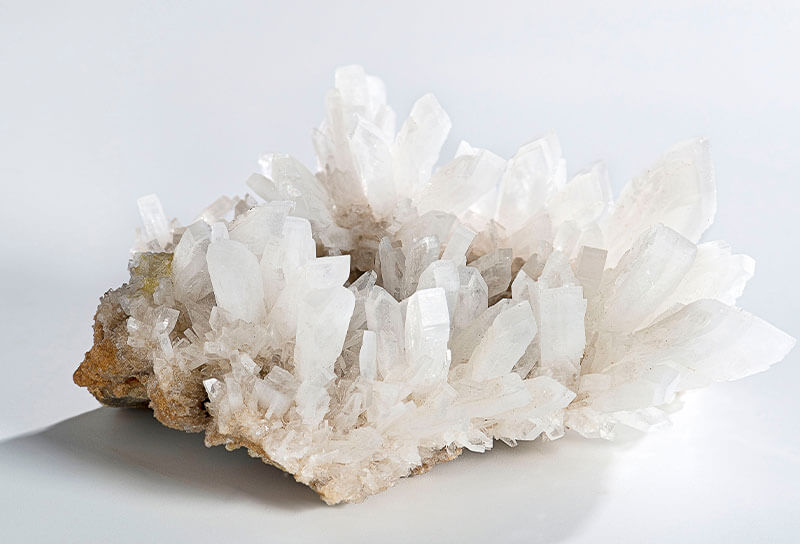
Barite powder is an important barium-containing inorganic mineral raw material, which is quite different from the properties of polymer materials and lacks affinity, which limits its application in the field of polymer materials. In order to further improve its performance and broaden its application field, the surface of barite powder must be modified.
Modification mechanism
The surface modification of inorganic mineral powders is mainly achieved by the adsorption and coating of chemical modifiers on the surface of mineral powders. Surface modification of one or both of the two substances to be carried out by some small molecules or polymer compounds with amphoteric groups, lipophilic and hydrophilic groups, and minerals are made by chemical reaction or physical coating. The surface changes from hydrophilic to hydrophobic, which enhances the compatibility and affinity with organic polymers, and improves the dispersion, so that the organic and inorganic substances can be better combined.
Modification method
Surface modification methods include physical adsorption, coating or physical-chemical methods. Generally speaking, the surface modification methods of mineral particles mainly include the following types.
1 surface coating modification
Use inorganic or organic substances to coat the surface of mineral powder, endowing the particle surface with new properties. This method is to combine the surfactant or coupling agent with the surface of the particle by adsorption or chemical bonding, so that the surface of the particle changes from hydrophilic to hydrophobic, and the compatibility between the particle and the polymer is improved. This method is currently the most commonly used method.
2 Precipitation reaction modification
The chemical precipitation reaction is used to deposit the product on the surface of the mineral powder to form one or more "modified layers", so as to achieve the effect of modification.
3 mechanochemical modification
Using mechanical stress to activate the surface as a means to grind and crush minerals, relatively large particles are made smaller by crushing, friction, etc.
4 graft modification
Some groups or functional groups compatible with polymers are grafted on the surface of particles by chemical reaction, so that inorganic particles and polymers have better compatibility, so as to achieve the purpose of compounding inorganic particles and polymers.
5 surface chemical modification
This modification method is currently the most widely used method in production. It uses surface modifiers to chemically react or adsorb certain functional groups on the mineral surface to achieve the purpose of chemical modification.
6 High Energy Surface Modification
Use the huge energy generated by high-energy discharge, ultraviolet rays, plasma rays, etc. to modify the surface of the particles to make the surface active and improve the compatibility between the particles and the polymer.
Barite products are widely used in petroleum industry, chemical industry, paint industry and metal casting industry. In addition, barite can also be partially used in the manufacture of friction plates for transportation equipment. Modified barite ultrafine powder and organic high polymer have good compatibility and affinity, and can be uniformly dispersed in the matrix; it can replace expensive precipitated barium sulfate in single-sided coated paper, coatings, and paints, reducing production cost. The use of other modifiers to modify barite powder still has great prospects, and it still needs to use higher technical means and methods to continuously explore and develop.
Superfine Powder Classification Technology and Its Typical Equipment
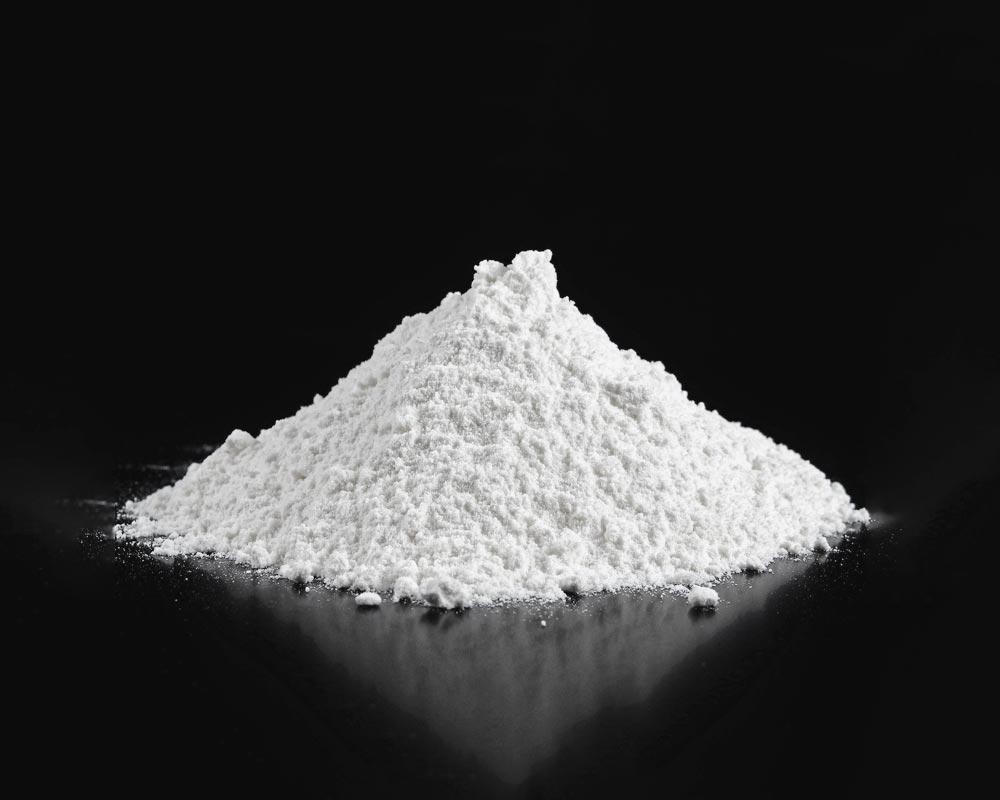
Ultrafine powder is not only the basis for preparing structural materials, but also a material with special functions. field is required.
With the application of ultra-fine powder in modern industry more and more widely, the position of powder classification technology in powder processing becomes more and more important.
1. The meaning of classification
In the pulverization process, only a part of the powder usually meets the particle size requirements. If the products that have reached the requirements are not separated in time, and then pulverized together with the products that do not meet the particle size requirements, it will cause energy waste and over-crushing of some products. In addition, after the particles are refined to a certain extent, the phenomenon of crushing and agglomeration will appear, and even the crushing process will deteriorate due to the larger particle agglomeration.
For this reason, in the process of ultrafine powder preparation, it is necessary to classify the product. On the one hand, the particle size of the product is controlled to be within the required distribution range; Then crush to improve the crushing efficiency and reduce energy consumption.
With the improvement of the required powder fineness and the increase of output, the difficulty of classification technology is getting higher and higher. The problem of powder classification has become the key to restrict the development of powder technology, and it is one of the most important basic technologies in powder technology. one. Therefore, the research on ultrafine powder classification technology and equipment is very necessary.
2. The principle of classification
Classification in a broad sense is to divide the particles into several different parts by using the different characteristics of particle size, density, color, shape, chemical composition, magnetism, and radioactivity.
Classification in a narrow sense is based on the fact that particles of different particle sizes are subjected to centrifugal force, gravity, inertial force, etc. in the medium (usually air and water), resulting in different motion trajectories, so as to realize the classification of particles of different particle sizes.
3. Classification of classifiers
According to the medium used, it can be divided into dry classification (the medium is air) and wet classification (the medium is water or other liquids). The characteristic of dry classification is that air is used as fluid, which is low in cost and convenient.
According to whether it has moving parts, it can be divided into two categories:
(1) Static classifier: There are no moving parts in the classifier, such as gravity classifier, inertia classifier, cyclone separator, spiral airflow classifier and jet classifier, etc. This type of classifier has a simple structure, does not require power, and has low operating costs. The operation and maintenance are more convenient, but the classification accuracy is not high, so it is not suitable for precision classification.
(2) Dynamic classifier: There are moving parts in the classifier, mainly referring to various turbine classifiers. This type of classifier is complex in structure, requires power, and consumes a lot of energy, but it has high classification accuracy and is easy to adjust the particle size of the classifier. As long as the rotation speed of the impeller is adjusted, the cutting particle size of the classifier can be changed, which is suitable for precision classification.
Typical Grading Equipment
(1) wet classifier
The wet classification of ultrafine powder is mainly divided into gravity type and centrifugal type according to the current market situation.
(2) Dry classifier
Most of the dry classifiers use centrifugal force field and inertial force field to classify powder, and they are important fine classification equipment with rapid development at present. The following are several representative devices.
Conical centrifugal air classifier. The conical centrifugal air classifier realizes the separation of coarse powder and fine powder under the action of centrifugal force. The finest particle size of the finished product of this equipment can reach about 0.95μm, and the classification accuracy d75/d25 can reach 1.16.
The equipment does not have any moving parts, and the angle of the deflector can be adjusted between 7° and 15°. The equipment has compact structure, high classification efficiency, and safe and reliable operation.
Surface Coating Technology of Ultrafine Powder

Ultrafine powder (usually refers to particles with a particle size of micron or nanometer) has the characteristics of large specific surface area, high surface energy and high surface activity, so it has excellent optical, electrical and magnetic properties that are difficult to match with many bulk materials. , thermal and mechanical properties. However, due to the small size effect, quantum size effect, interface and surface effect, and macroscopic quantum tunneling effect of ultrafine powder, it is easy to agglomerate in the air and liquid medium. If it is not dispersed, the agglomerated ultrafine The powder cannot fully maintain its specific properties. The most effective way to disperse ultrafine powder is to modify its surface. In recent years, powder surface modification technology has become one of the hot technologies that people pay attention to. Among them, surface coating modification is an important kind of surface modification technology. Coating, also known as coating or coating, is a method of coating the surface of mineral particles with inorganic or organic substances to achieve modification.
At present, there are several classification methods for the surface coating technology of ultrafine powder according to different methods. For example, according to the state of the reaction system, it can be divided into: solid phase coating method, liquid phase coating method, and gas phase coating method; according to the properties of the shell material, it can be divided into: metal coating method, inorganic coating method and organic coating method; Coating properties can be divided into: physical coating method and chemical coating method and so on.
Solid phase coating method
1) Mechanochemical method
2) Solid phase reaction method
The solid-state reaction method is to thoroughly mix the coated substance with metal salt or metal oxide through grinding, and then undergo a solid-state reaction under high-temperature calcination to obtain micro/nano ultra-fine coated powder.
3) High energy method
The method of coating ultrafine particles with high-energy particles such as ultraviolet rays, corona discharge, and plasma radiation is collectively referred to as high-energy methods. This is a relatively new powder coating technology.
4) Polymer encapsulation method
Coating a layer of organic substances on the surface of the powder can enhance its anti-corrosion barrier effect, improve the wettability and stability in organic media, and enhance the interfacial regulation in composite materials, by anchoring active molecules or biomolecules And biologically functional.
5) Microcapsule modification method
Microcapsule method modification is to cover a layer of micron-scale or nano-scale uniform film on the surface of fine particles to modify the characteristics of the particle surface.
Liquid coating method
Liquid-phase coating technology is to achieve surface coating in a wet environment through chemical methods. Compared with other methods, it has the advantages of simple process, low cost, and is easier to form a core-shell structure. Commonly used liquid phase methods include hydrothermal method, precipitation method, sol-gel method, heterogeneous nucleation method, and electroless plating.
1) Hydrothermal method
2) Sol-gel method
3) Precipitation method
The precipitation method is to add the metal salt solution of the coating material to the water suspension of the coated powder, and then add a precipitant to the solution to cause the metal ion to precipitate and precipitate on the surface of the powder to achieve the surface coating effect.
4) Non-uniform nucleation method
5) Electroless plating method
The electroless plating method refers to a coating technology in which the plating solution undergoes a self-catalyzed oxidation-reduction reaction without external current, and the metal ions in the plating solution undergo a reduction reaction to become metal particles deposited on the surface of the powder.
6) Microemulsion method
7) Miscellaneous flocculation method
Vapor coating
The gas phase coating method is to use the modifier in the supersaturated system to gather on the surface of the particles to form a coating on the powder particles. It includes physical vapor deposition and chemical vapor deposition. The former relies on the van der Waals force to achieve particle coating, and the binding force between the core and the shell is not strong; the latter uses gaseous substances to react on the surface of nanoparticles to form solid deposits to achieve the coating effect. Rely on chemical bonding.
With the development of science and technology, powder coating technology will be further improved, and it is expected to prepare multi-functional, multi-component, and more stable ultrafine composite particles, which will open up broader application prospects for composite particles.
The production process of ultrafine powder - Impact pulverization
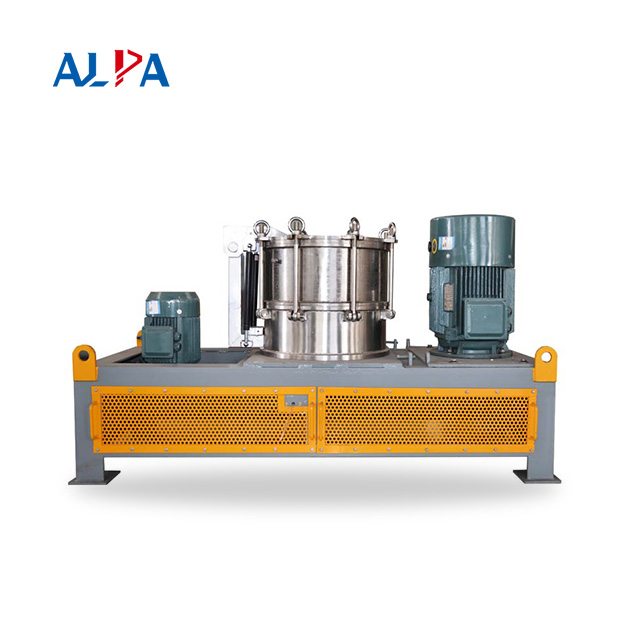
It is a method that has been widely used since ancient times to mechanically pulverize bulk materials into powder. At present, bulk ultrafine powder still mainly relies on mechanical crushing. Commonly used ultrafine crushing equipment includes: autogenous mill, jet mill, high-speed mechanical impact mill, vibration mill, stirring mill (including various sand mills, tower mills, etc.), Colloid mill (including homogenizer, etc.), ball mill, Raymond mill, etc.
Mechanical pulverization is generally used to produce powders larger than 1 μm. A small number of equipment, such as jet jet mill, can be used to produce materials smaller than 1 μm, which can crush materials to sub-micron level, that is, 0.1+0.5 μm. Its structure is that the compressed air produced by the air compressor is sprayed out from the nozzle, and the powder collides with each other in the jet flow and is crushed.
Raw materials are fed from the hopper, accelerated to supersonic speed by the Venturi nozzle, and introduced into the pulverizer; in the pulverization zone formed by the fluid ejected from the grinding nozzle inside the pulverizer, the material particles collide with each other, rub and pulverize into fine powder. Among them, those who lose centrifugal force and are introduced into the center of the pulverizer are superfine powders; coarse powders do not lose centrifugal force, and continue to be pulverized in the crushing belt.
The jet mill developed in Germany suspends and collides the powder smaller than 0.088mm into superfine powder, so it can produce products of various grades not larger than 44μm, and the average particle size can reach 1, 2, 3, 4μm. This kind of jet mill has high production efficiency, does not pollute the environment, and the product has high purity, fine particles, and no agglomeration. It is an ideal ultrafine grinding equipment. The technical development trend of the mechanical pulverization method is to improve the process technology on the existing basis, develop high-efficiency and low-consumption ultra-fine pulverization equipment, fine classification equipment and supporting auxiliary process equipment, and expand the particle size limit of mechanical pulverization, while improving the processing capacity , forming economies of scale.
In the ultra-fine crushing process, fine grading equipment is also required to separate qualified fine powder materials in a timely manner, improve the efficiency of crushing operations, and control the particle size distribution of products. At present, there are two types of commonly used classification equipment: one is dry classification, generally centrifugal or turbine wind classifier; the other is wet classification equipment, generally using horizontal spiral centrifugal classifier, small diameter and small Cone angle hydrocyclone, and hydrocyclone etc.
Generally, hydraulic classification is used, and the commonly used methods are sedimentation method, overflow method, cyclone method and centrifugation method. The sedimentation method uses the mechanism of different sedimentation speeds in water for different particle sizes to classify; the mechanism of the overflow method is similar to the sedimentation method, the difference is that the water flow speed is greater than the particle sedimentation speed, thereby bringing out the fine powder; the cyclone method The slurry rotates at high speed in the cyclone to generate centrifugal force, and the particle size is different, the centrifugal force is also different, so that the large and small particles can be separated; the centrifugal method is that the slurry rotates at high speed in the centrifuge, and the centrifugal force generated by particles of different sizes is also different.
After classification, the obtained products of various particle sizes are dehydrated and then dried.
In ultrafine grinding, the particle size of the powder is fine, and its specific surface area and surface energy are both large. The finer the particle size, the higher the mechanical strength of the material. Therefore, the energy consumption of ultra-fine pulverization is high, and the powder is easy to agglomerate under repeated mechanical force. In order to improve the crushing efficiency, in addition to strengthening the classification, grinding aids and additives are sometimes added.
The production process of the mechanical pulverization method is simpler than that of the chemical synthesis method, the output is large, the cost is low, and the produced micropowder has no agglomeration. However, it is unavoidable to mix impurities in the crushing process, and the particle shape of the crushed product is generally irregular, and it is difficult to obtain fine particles smaller than 1 μm.
4 major application fields of silica powder
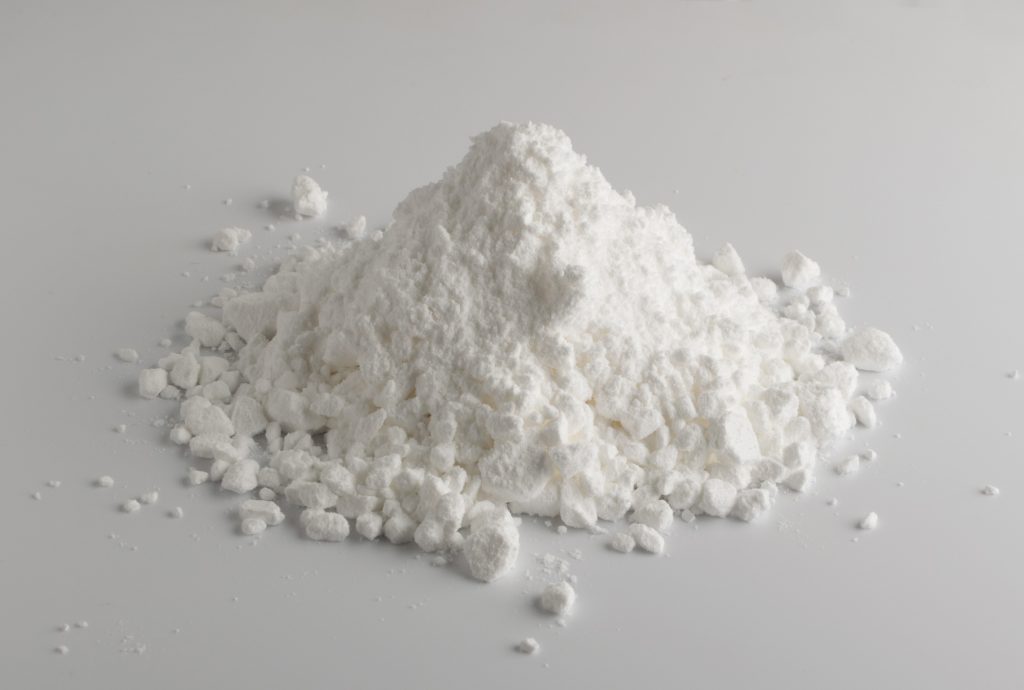
Due to its advantages of acid and alkali corrosion resistance, high temperature resistance, low linear expansion coefficient and high thermal conductivity, microsilica powder is widely used in copper clad laminates, epoxy molding compounds and other fields to improve the performance of related products.
1. Copper clad laminate
Adding silicon micropowder to the copper clad laminate can improve the physical properties such as the linear expansion coefficient and thermal conductivity of the printed circuit board, thereby effectively improving the reliability and heat dissipation of electronic products.
At present, there are five types of silica powder used in copper clad laminates: crystalline silica powder, molten (amorphous) silica powder, spherical silica powder, composite silica powder, and active silica powder.
Spherical microsilica powder is mainly used in high-filling, high-reliability high-performance copper clad laminates due to its unique characteristics of high filling, good fluidity, and excellent dielectric properties. The main indicators of spherical silica powder for copper clad laminates are: particle size distribution, sphericity, purity (conductivity, magnetic substances and black spots). At present, spherical silicon micropowder is mainly used in rigid copper clad laminates, and the proportion of mixed casting in copper clad laminates is generally 20% to 30%; the usage of flexible copper clad laminates and paper-based copper clad laminates is relatively small.
2. Epoxy molding compound
Filling silicon micropowder into epoxy molding compound can significantly increase the hardness of epoxy resin, increase the thermal conductivity, reduce the exothermic peak temperature of the reaction of cured epoxy resin, reduce the linear expansion coefficient and curing shrinkage rate, reduce internal stress, and improve The mechanical strength of epoxy molding compound can reduce the cracking phenomenon of epoxy molding compound, thereby effectively preventing external harmful gas, moisture and dust from entering electronic components or integrated circuits, slowing down vibration, preventing external force damage and stabilizing component parameters.
Common epoxy molding compounds are mainly composed of 60-90% filler, less than 18% epoxy resin, less than 9% curing agent, and about 3% additives. The currently used inorganic fillers are basically microsilica powder, with a content of up to 90.5%. Silica powder for epoxy molding compound mainly focuses on the following indicators:
(1) Purity. High purity is the most basic requirement of electronic products for materials, and the requirements are more stringent in VLSI. In addition to the low content of conventional impurity elements, it is also required that the content of radioactive elements be as low as possible or not. With the advancement of the manufacturing process, the electronics industry has higher and higher requirements for the purity of silicon micropowder.
(2) Particle size and uniformity. VLSI packaging materials require fine silicon powder particle size, narrow distribution range, and good uniformity.
(3) Spheroidization rate. High spheroidization rate is the prerequisite to ensure high fluidity and high dispersibility of fillers. High spheroidization rate and good sphericity of silicon micropowder have better fluidity and dispersion performance, and can be more fully dispersed in epoxy molding compounds to ensure The best filling effect.
3. Electrical insulation materials
Microsilica powder is used as epoxy resin insulating packing material for electrical insulation products, which can effectively reduce the linear expansion coefficient of the cured product and the shrinkage rate during the curing process, reduce internal stress, and improve the mechanical strength of the insulating material, thereby effectively improving and enhancing the insulating material. mechanical and electrical properties.
4. Adhesive
As an inorganic functional filler, silica powder can effectively reduce the linear expansion coefficient of the cured product and the shrinkage rate during curing when filled in the adhesive resin, improve the mechanical strength of the adhesive, improve heat resistance, permeability and heat dissipation performance, thereby improving the viscosity. Knot and seal effect.
The particle size distribution of microsilica powder will affect the viscosity and sedimentation of the adhesive, thereby affecting the manufacturability of the adhesive and the linear expansion coefficient after curing. Therefore, the field of adhesives pays attention to the function of microsilica powder in reducing the linear expansion coefficient and improving mechanical strength. The requirements for appearance and particle size distribution are relatively high, and products of different particle sizes with an average particle size between 0.1 microns and 30 microns are usually used for compound use.

